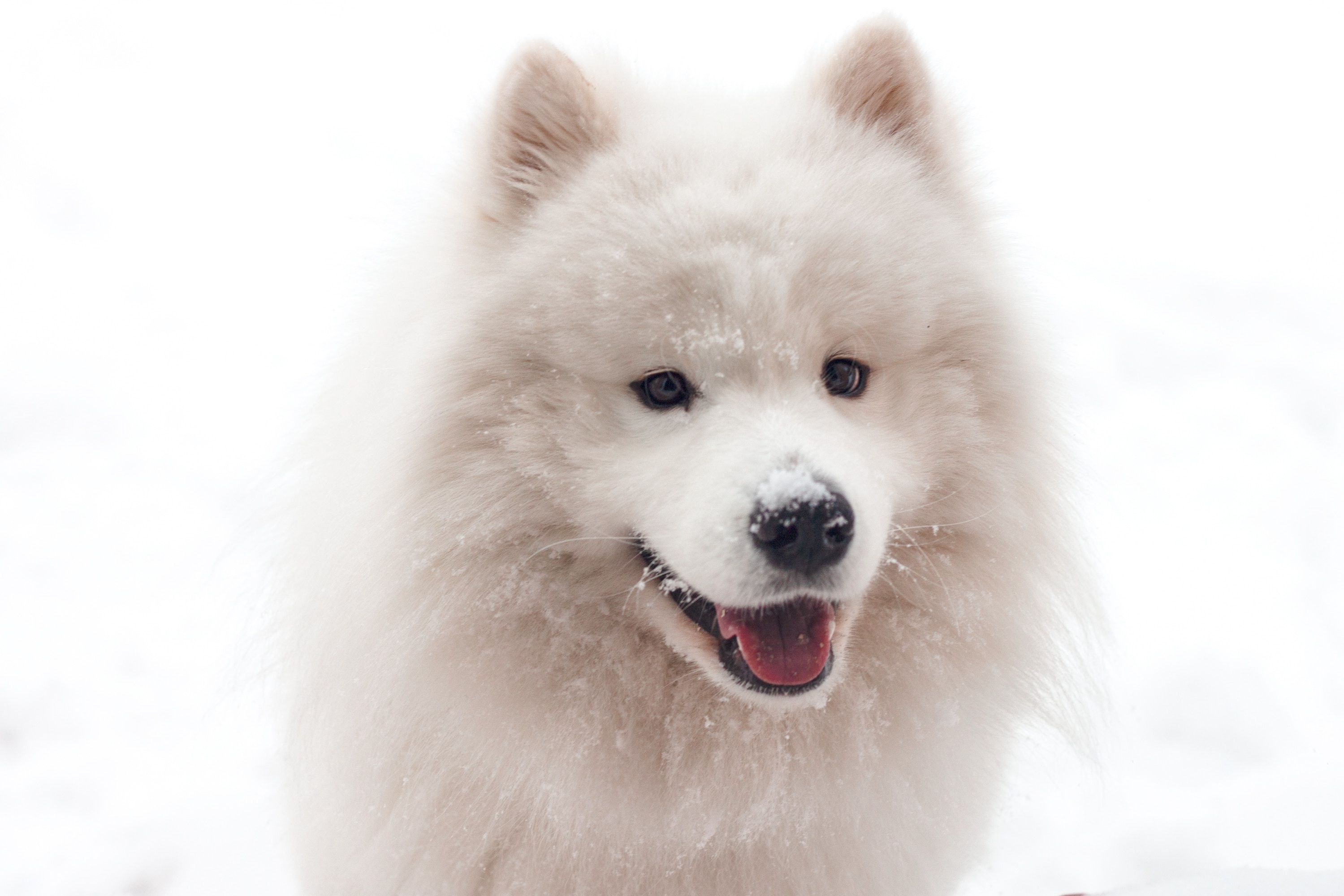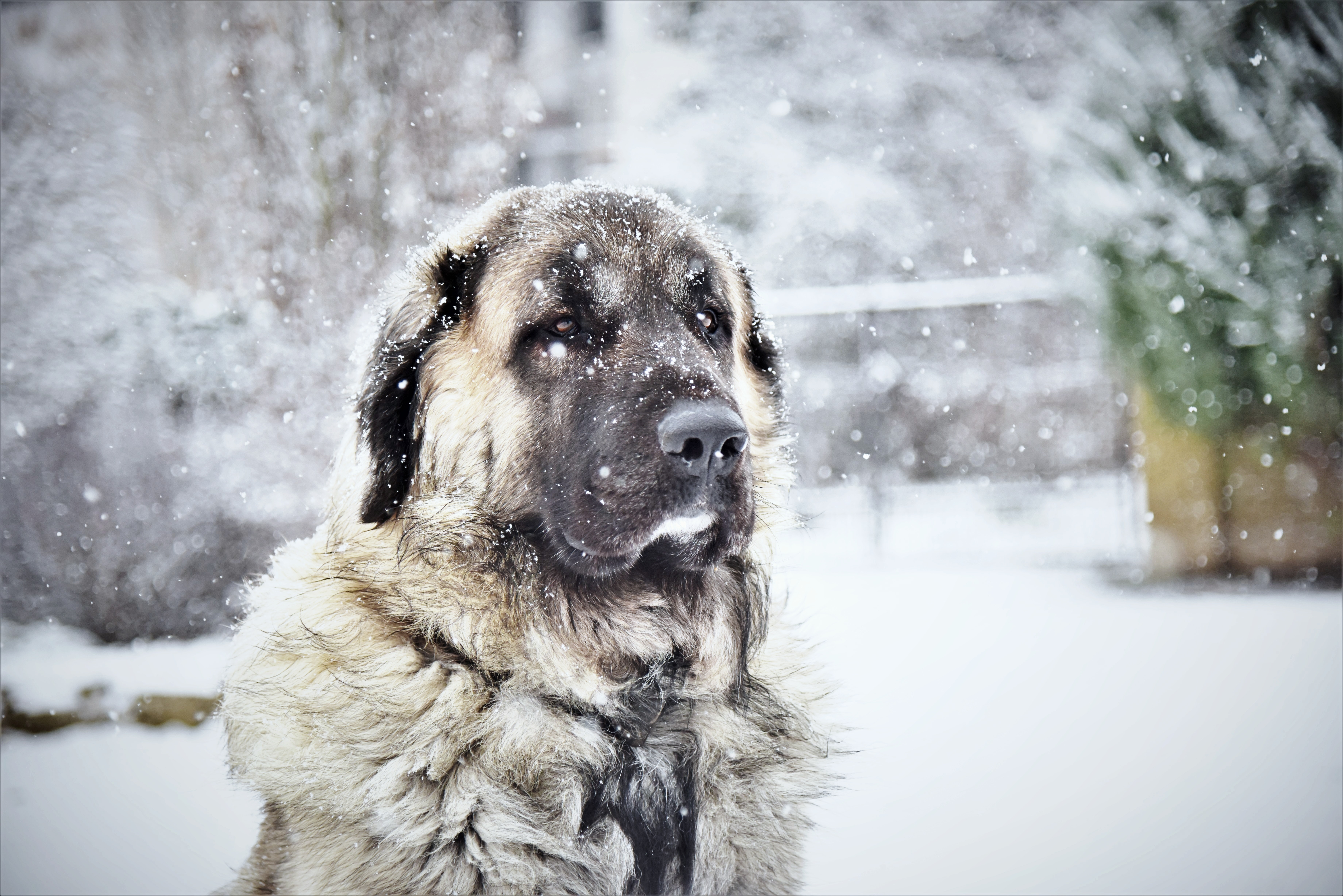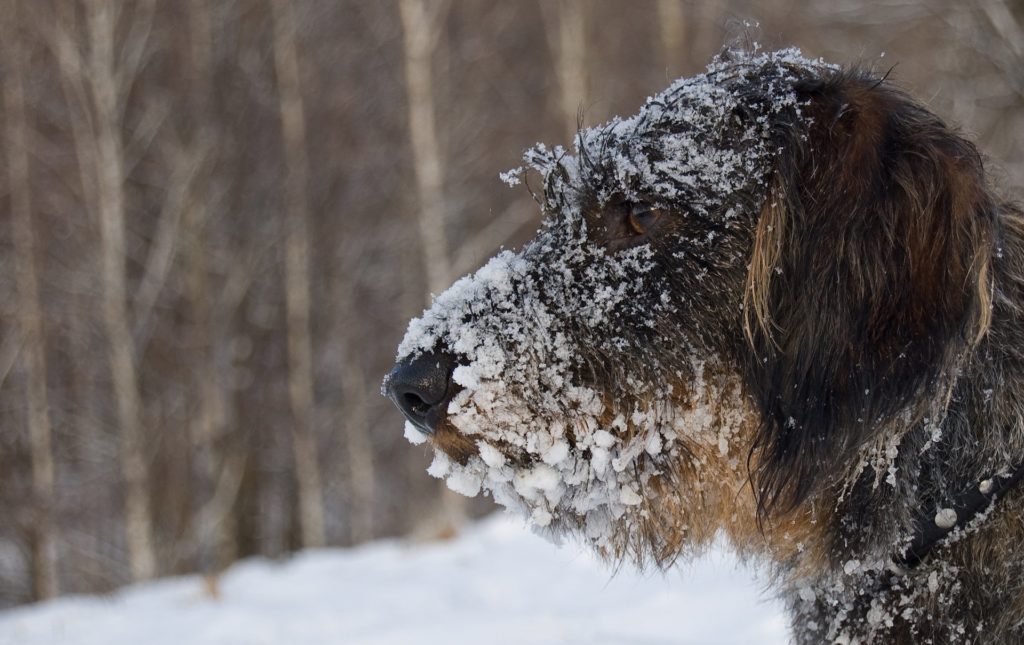Though it is a common misconception that dogs stay warmer in cold weather than people, the truth is, that isn’t always the case. Especially if the weather is extremely cold. If you have ever asked yourself, “Do dogs get cold like humans?”, than this post is for you.
In extreme climates, dogs can suffer from the same conditions as people, including frostbite and hypothermia. Even though it may be fun to get outside and play with your pet during the winter months, it may not be the wisest decision to stay outdoors for too long.
This is especially true if you take your dog out in the snow. Just because your dog naturally has a fur coat does not mean he will be warm enough for an extended period through snow and ice.
It should also be noted that even if temperatures aren’t extremely low, some weather is just as dangerous for your dog to endure. For instance, dogs should never be left out in rain or heavy wind. A good rule of thumb to follow is if you feel cold and feel the need to wear a jacket or bundle up in layers, then your dog could also be cold. If so, he may need to stay indoors for the day or bundle up himself in a doggie sweater.
Breeds Suited for Cold Weather
Of course, there are some breeds that are better equipped for colder climates than others. If you live in areas of the world that experience extremely cold weather, you should make sure to get a breed that is suited for those conditions.
 Best dogs for cold weather:
Best dogs for cold weather:
- The Alaskan Malamute
- The Chow Chow
- The Siberian Husky
- The Tibetan Mastiff
- The Great Pyrenees
- The Bernese Mountain Dog
- The Samoyed
- The Bearded Collie
- The Black Russian Terrier
- The American Eskimo Dog
There are other Northern breeds too, that are built and bred to hold up under colder climates much better than their thin-blooded, thin-coated canine counterparts.
Every Dog Reacts to Cold Differently
The truth is that every dog is distinct, with his own personality traits and physical characteristics. Some dogs are better equipped to handle colder environments than others, despite the breed type. Some of the factors that may affect how your dog responds to cold weather includes:
Your Dog’s Size
How big or small your dog is can have a significant impact on how he handles cold weather. Because smaller dogs have more skin over a larger area in relation to volume, they can lose heat faster than larger dogs.
Your Dog’s Weight
Your dog’s weight will be another factor to consider when deciding if he is equipped for cold weather. Even with smaller dogs, if they are heavier set, they will stay warmer for longer compared to slimmer dogs because fat works like insulation. However, canine obesity comes with its own health problems, so never purposely try to help your dog pack on pounds during the colder months.
Your Dog’s Coat Color
Surprisingly, the color of your dog’s coat can also be a factor in how quickly your dog loses heat. Dogs with darker coats like brown or black absorb more heat from the sunlight than dogs with a lighter coat like white or tan. If you think about it, it’s similar to the color of your car. Darker cars tend to be hotter on the inside during warmer months because they absorb more heat, whereas white or light-colored cars tend to be cooler on the inside.
Your Dog’s Age and Health
A dog’s age and health also plays a role in how well he will be able to tolerate cold weather. Dogs that are very young, elderly dogs, and dogs that are sick or who suffer from chronic health problems may have a harder time regulating their body temperature than healthy dogs.
Your Dog’s Conditioning
Obviously, if your dog is exposed to cold weather on a regular basis, he will become more accustomed to it and conditioned to withstand these climates. Whereas a dog that is used to warm weather may have a more difficult time adjusting to colder temperatures.
 How Cold is Too Cold?
How Cold is Too Cold?
It can be hard to judge how cold is too cold, especially if you aren’t used to extreme weather. Generally, climates 40°F or less will be too much for most small to medium-sized dogs. This is breed-dependent of course. Larger dogs can withstand slightly colder climates depending on the breed, as long as it is not below 35°F. Anything colder than 35°F has risks no matter what size or breed of dog you own. And for dogs of all kinds, if the weather is below 10°F, it’s advised to avoid extended periods of time outdoors altogether.
Signs Your Dog May Be Cold
There are a few things you can look for in your dog to determine whether he might be getting cold. Like people, dogs that are cold may shake or shiver. Dogs can also experience dry skin that flakes. Some dogs might get drowsy and sleep more than normal. Other dogs might display strange behaviors or postures, like lifting their paws, moving slowly, or acting as though they are anxious.
Even your dog’s breathing can indicate if he is having a hard time dealing with the cold. A dog may feel cold to the touch, especially in areas like his ears or the top of his tail. Whining, barking, or scratching at the door can be a sign your dog is cold and is eager to get back inside. You might notice your dog seeks warmth like a heat-seeking missile, whether that means curling up on his bed, cuddling his blankets, or climbing onto your lap.
Weather Considerations
Cold temperatures aren’t the only thing that should be evaluated when deciding whether it’s too cold for your dog to be outside or not. You should also look at the cloud cover, because even if temperatures are higher, it can feel colder with clouds. Plus, there will be no sun to help your dog warm himself.
Rainy days, wet and drizzly days, days that have heavy fog and moisture in the air, exposure to wet snow or even swimming in cooler temperatures can all affect your dog’s ability to keep warm. This is true even if it’s not extremely chilly outside.
Wind chill can also be a big problem and make cold air feel even colder. Just think about a time when you went outside and the weather felt nice enough, but the wind chill cut through your jacket like a knife, making you colder than expected.
Additionally, your dog’s activity levels while outdoors can also be a big factor in how cold he gets. The more active your dog is outside, the more warmth his body will naturally generate. The less active he is, the colder his body can come can become.
Cold Weather Myths
There are a lot of myths floating around and misconceptions that people hold that aren’t actually fact. Here are a few, in no particular order.
Too Cold for You, Too Cold for Your Dog
One of the biggest myths is, if it’s too cold outside for you, it is too cold outside for your dog. This simply isn’t the case. Dogs have a higher resting body temperature than humans and there are many dog breeds that are built for colder weather, even more so than humans. However, common sense should always prevail. A Miniature Pinscher playing outside in the snow will get a lot colder and faster than a Siberian Husky will.
Dogs Don’t Need an Extra Coat
Another myth is that if a dog has fur, they don’t need a coat. Though it is true a dog does have his own coat, it doesn’t mean he couldn’t use an extra layer. This is especially true for dogs with short hair or smaller dogs. Just make sure that whatever coat your dog wears, it fits him properly and doesn’t interfere with his ability to move.
Dog’s Aren’t Meant to Wear Boots
Well, no, they aren’t. Not really. And yes, it can seem a little strange to put your dog in a pair of boots. After all, boots are made for people. However, they can be a big help in protecting your dog’s feet, especially an extreme climates. They can also protect your dog’s feet from surfaces that are rough or that have been treated with chemicals. Just note that doggie boots can be an adjustment. Not all dogs will tolerate them.
Some Dogs are Built for Winter
Though it’s true there are some breeds that are better equipped for colder climates than others, that doesn’t mean your furry friend can’t get canine frostbite or dog hypothermia if he’s left in the cold for too long. You should always keep an eye on your dog when playing outside and watch his actions. He will let you know by his behavior whether or not he is feeling the effects of the cold and if he wants to go back inside where it’s warm.
Ways to Keep Your Dog Warm in Winter
 Try to go outside and play when it’s warm out and the sun is shining. In colder climates, this means going outside later in the morning or earlier in the afternoon and avoiding going out too early or too late. Not only will you help your dog enjoy the colder weather, you’ll keep him safe from overexposure.
Try to go outside and play when it’s warm out and the sun is shining. In colder climates, this means going outside later in the morning or earlier in the afternoon and avoiding going out too early or too late. Not only will you help your dog enjoy the colder weather, you’ll keep him safe from overexposure.
Avoid staying outside for extended periods of time, especially if the weather is severe. Yes, it’s fun to get outside and play, even in the snow, but keep those excursions short and go back in when you both start feeling the effects of the cold.
Make sure your dog has a cozy, warm place to sleep indoors. Hard floors can make your dog feel colder, which is why you should provide him with a comfy bed or mat. In the colder months, you can even give your dog a few blankets or towels for extra warmth.
You should keep your dog’s bed somewhere cozy and familiar to encourage him to sleep on it, and always be careful with things like space heaters and fireplaces. Dogs can inadvertently get too close in their attempts to stay warm and end up burning themselves.
Also, remember it’s important to keep your dog well hydrated and keep his skin moisturized during cold winter months. Dogs can become dehydrated quickly, and their skin is just as vulnerable to dryness and flaking as ours.
Along with his hydration, be sure to care for your dog’s paws, especially if you live in an area where snow is prevalent. In the city, salt on the sidewalks can be toxic and burn your dog’s paw pads. Make sure you wash his feet every time you go back indoors. You can also trim the fur in between your dog’s paw pads if they are very furry, to keep them from collecting ice between his paw pads.
And finally, while it is extremely dangerous to leave your dog alone in a hot car, it’s also equally as dangerous to leave your dog alone in a cold car, especially in freezing temperatures. Leave your dog home for the day if you have things to do. He will be both warmer and safer.
So, do dogs get cold? Yes, they do. Just like people. Fortunately, by observing your dog and his behavior, you can tell when the cold is getting the best of him and make sure to take him indoors before it becomes a problem.
Sources:
Baxamusa, Batul Nafisa. “When Do Dogs Get Cold?” DogAppy, dogappy.com/when-do-dogs-get-cold.
“How Cold Is Too Cold for Your Dog?” PetMD, 19 Nov. 2018, www.petmd.com/dog/care/how-cold-too-cold-dog.
“How Cold Is Too Cold For Your Dog?” Petplan, www.gopetplan.com/blogpost/cold-weather-and-dogs.
“Can Dogs Get Too Cold? 5 Symptoms and What You Can Do [Infographic].” Healthy Pet Food for Skin & Coat, www.avodermnatural.com/blog/can-dogs-get-cold.




